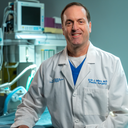Posted underEyelid Surgery q&a
Cyst or lump after upper eyelid surgery. Can this be easily removed? (Photo)
I had eye lid surgery 9 months ago and I have a large lump on the scar. Can this be easily removed.
Answers (5)
From board-certified doctors and trusted medical professionals

Dr. John J. Martin, Jr., MD
Oculoplastic Surgeon, Board Certified in Ophthalmology
Answer
Dr. Inessa Fishman, MD
Facial Plastic Surgeon, Board Certified in Otolaryngology – Head and Neck Surgery
Answer
Dr. Ira Vidor, MD
Oculoplastic Surgeon, Board Certified in Ophthalmology
Answer
More Eyelid Surgery Questions
See all Eyelid Surgery Q&AWE SEND PRETTY
EMAILS
What’s trending? Who’s turning heads? Which TikTok myths need busting? We’ve got you. No fluff, no gatekeeping—just real talk. Get our free, unfiltered newsletter.
